Abstract
Young male Sprague-Dawley rats were fed 0, 1, 10, or 100 ppm of polybrominated biphenyls (PBB) in iodine-deficient, iodine-adequate (0.2 ppm), or iodine-excess (1000 ppm) diets. Six rats in each of the 12 groups were killed at 30 days and the remaining six in each group at 60 days. Growth rates were similar in all rats fed diets containing 0, 1, or 10 ppm PBB but were slower from 30 to 60 days in rats given 100 ppm PBB. Results of routine hematologic examinations and urinalyses were essentially normal. Although liver weights were substantially increased by PBB, the smallest increases were in rats fed an iodine-deficient diet. Thyroid weights were increased by iodine deficiency and by 10 and 100 ppm PBB. Electropherograms of serum proteins, serum lipoproteins, and LDH isozymes at 60 days from rats given PBB indicated hepatic alterations, but changes were least dramatic in rats fed an iodine-deficient diet plus PBB and most severe in rats fed iodine-excess diets plus PBB. Hepatic lesions were basically similar to those previously described except that bile duct proliferation was seen at 60 days only in rats fed an iodine-deficient diet and 100 ppm PBB. Histologic changes in thyroid glands were associated with iodine deficiency and with PBB. The iodine-excess diet plus 100 ppm PBB induced squamous metaplasia of respiratory bronchiolar epithelium. These results indicate interrelationships between PBB and iodine which may affect the toxicosis caused by PBB.
Full text
PDF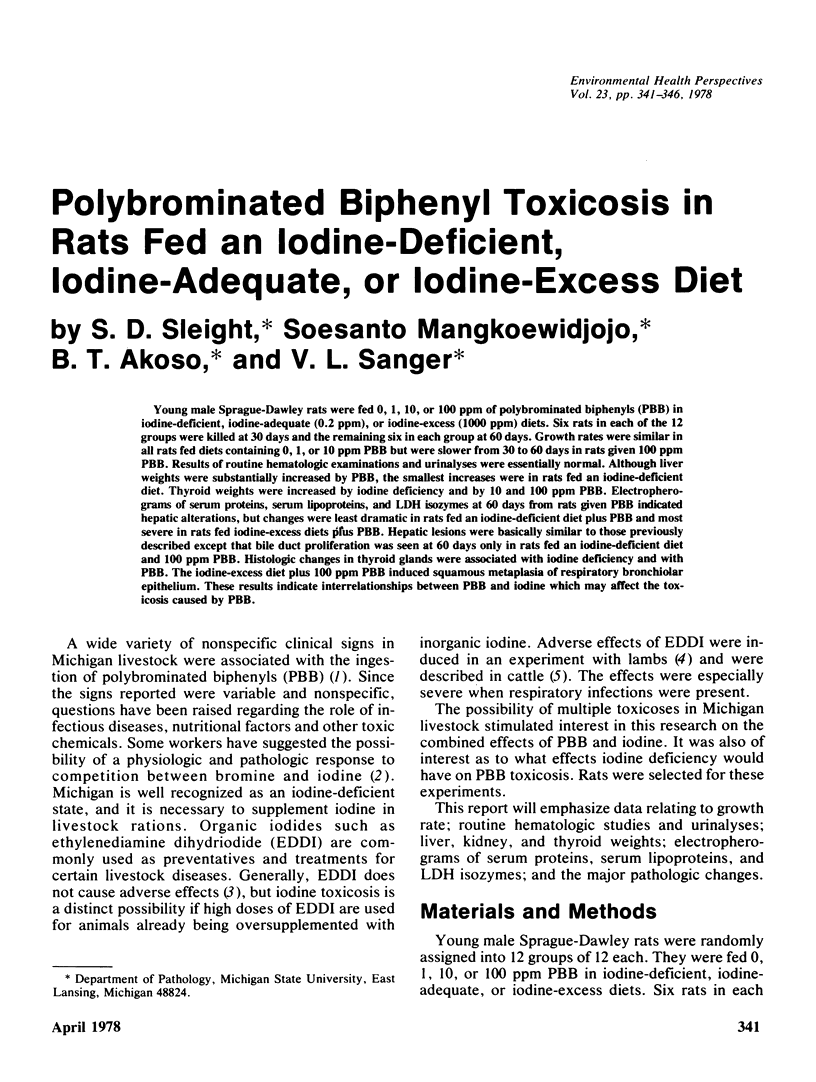
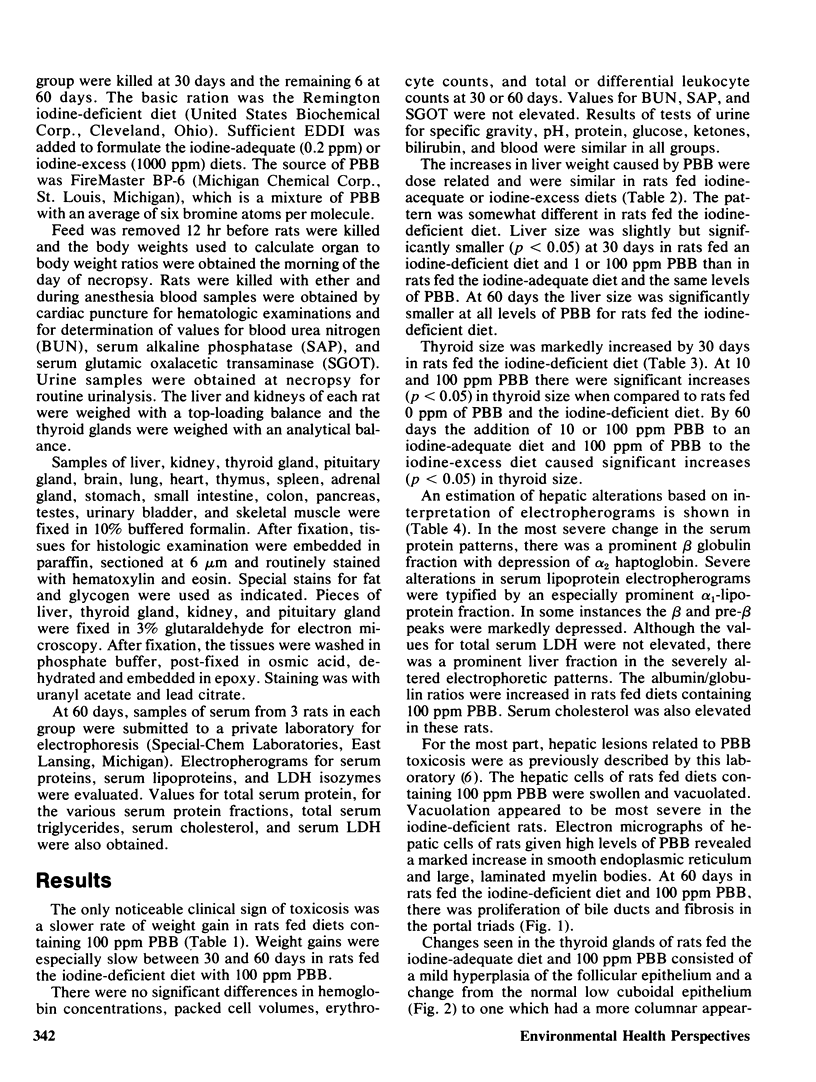
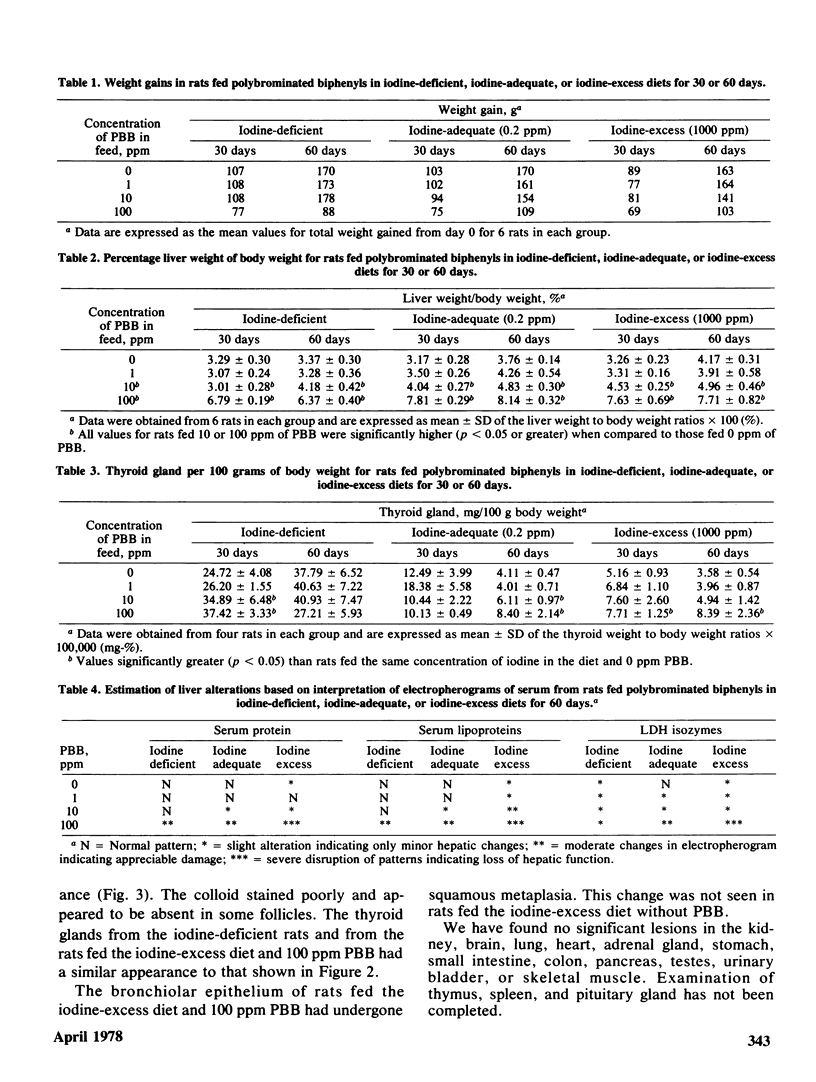
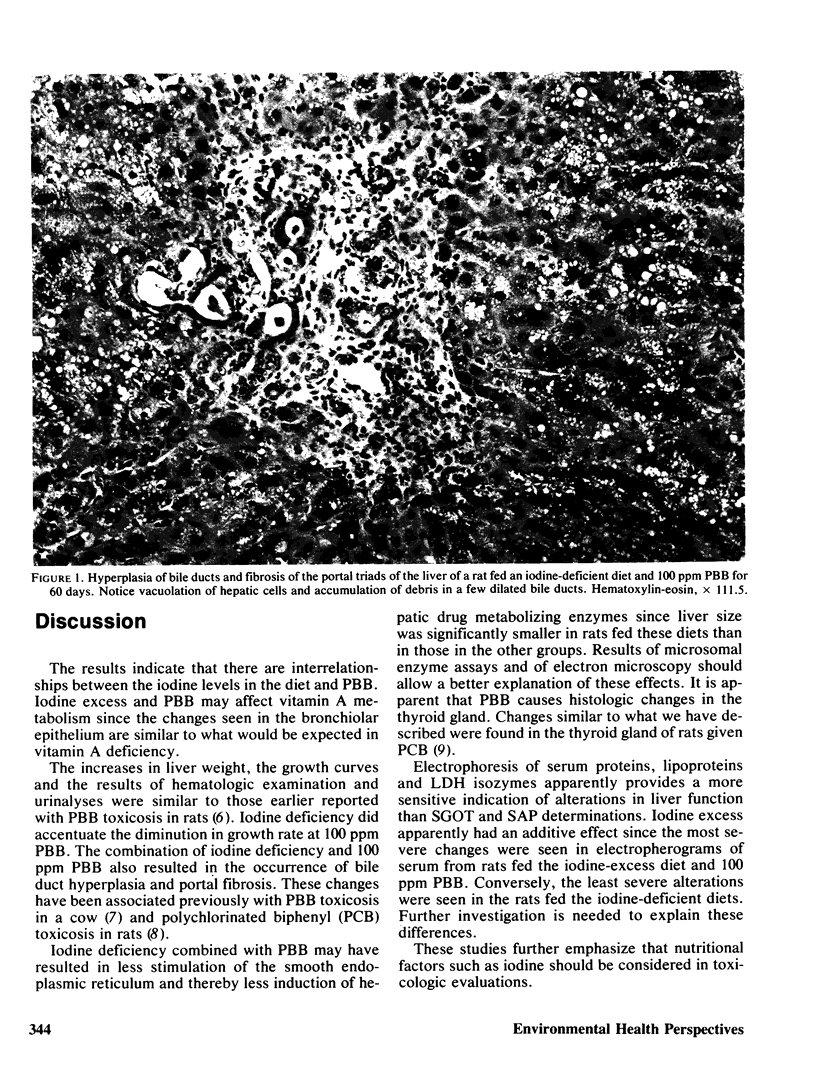

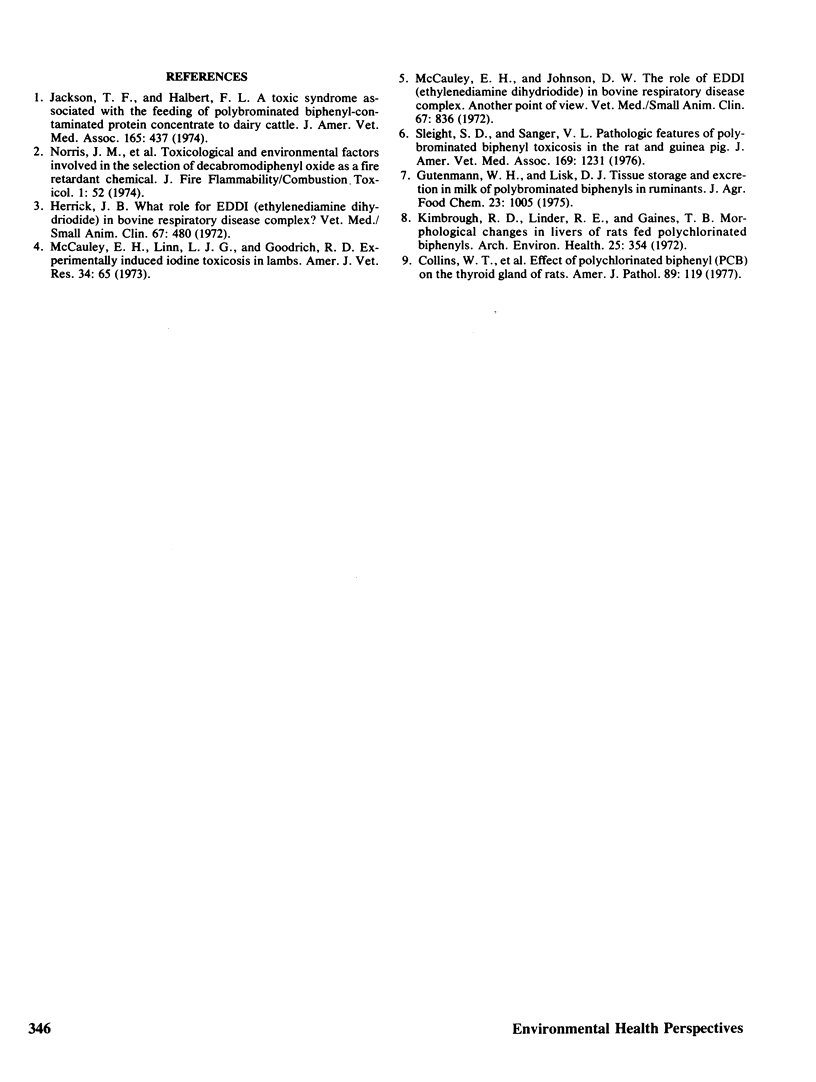
Images in this article
Selected References
These references are in PubMed. This may not be the complete list of references from this article.
- Collins W. T., Jr, Capen C. C., Kasza L., Carter C., Dailey R. E. Effect of polychlorinated biphenyl (PCB) on the thyroid gland of rats. Ultrastructural and biochemical investigations. Am J Pathol. 1977 Oct;89(1):119–136. [PMC free article] [PubMed] [Google Scholar]
- Gutenmann W. H., Lisk D. J. Tissue storage and excretion in milk of polybrominated biphenyls in ruminants. J Agric Food Chem. 1975 Sep-Oct;23(5):1005–1007. doi: 10.1021/jf60201a008. [DOI] [PubMed] [Google Scholar]
- Herrick J. B. What role for EDDI (ethylene diamine dihydriodide) in bovine respiratory disease complex? Vet Med Small Anim Clin. 1972 May;67(5):480–passim. [PubMed] [Google Scholar]
- Jackson T. F., Halbert F. L. A toxic syndrome associated with the feeding of polybrominated biphenyl-contaminated protein concentrate to dairy cattle. J Am Vet Med Assoc. 1974 Sep 1;165(5):437–439. [PubMed] [Google Scholar]
- Kimbrough R. D., Linder R. E., Gaines T. B. Morphological changes in livers of rats fed polychlorinated biphenyls: light microscopy and ultrastructure. Arch Environ Health. 1972 Nov;25(5):354–364. doi: 10.1080/00039896.1972.10666186. [DOI] [PubMed] [Google Scholar]
- McCauley E. H., Johnson D. W. The role of EDDI (ethylene diamine dihydriodide) in bovine respiratory disease complex: another point of view. Vet Med Small Anim Clin. 1972 Aug;67(8):836–passim. [PubMed] [Google Scholar]
- McCauley E. H., Linn J. G., Goodrich R. D. Experimentally induced iodide toxicosis in lambs. Am J Vet Res. 1973 Jan;34(1):65–70. [PubMed] [Google Scholar]
- Sleight S. D., Sanger V. L. Pathologic features of polybrominated biphenyl toxicosis in the rat and guinea pig. J Am Vet Med Assoc. 1976 Dec 1;169(11):1231–1235. [PubMed] [Google Scholar]





